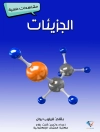Most traits in nature and of importance to agriculture are quantitatively inherited. These traits are di?cult to study due to the complex nature of their inheritance. However, recent developments of genomic technologies provide a revolutionary means for unraveling the secrets of genetic variation in quantitative traits. Genomic te- nologies allow the molecular characterization of polymorphic markers throughout the entire genome that are then used to identify and map the genes or quantitative trait loci (QTLs) underlying a quantitative trait based on linkage analysis. Statistical analysis is a crucial tool for analyzing genome data, which are now becoming increasingly available for a variety of species, and for giving precise exp- nations regarding genetic variation in quantitative traits occurring among species, populations, families, and individuals. In 1989, Lander and Botstein published a ha- mark methodological paper for interval mapping that enables geneticists to detect and estimate individual QTL that control the phenotype of a trait. Today, interval mappingisanimportantstatisticaltoolforstudyingthegeneticsofquantitativetraits at the molecular level, and has led to the discovery of thousands of QTLs responsible for a variety of traits in plants, animals, and humans. In a recent study published in Science, Li, Zhou, and Sang (2006, 311, 1936–1939) were able to characterize the molecular basis of the reduction of grain shattering – a fundamental selection process for rice domestication – at the detected QTL by interval mapping.
Table des matières
Basic Genetics.- Basic Statistics.- Linkage Analysis and Map Construction.- A General Model for Linkage Analysis in Controlled Crosses.- Linkage Analysis with Recombinant Inbred Lines.- Linkage Analysis for Distorted and Misclassified Markers.- Special Considerations in Linkage Analysis.- Marker Analysis of Phenotypes.- The Structure of QTL Mapping.- Interval Mapping with Regression Analysis.- Interval Mapping by Maximum Likelihood Approach.- Threshold and Precision Analysis.- Composite QTL Mapping.- QTL Mapping in Outbred Pedigrees.












